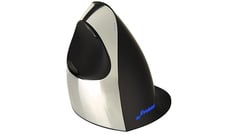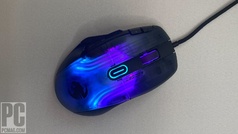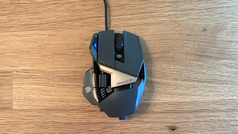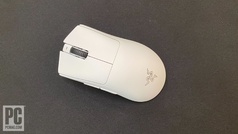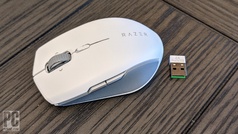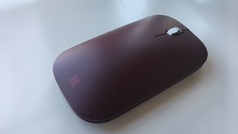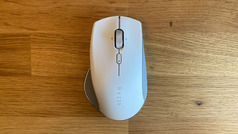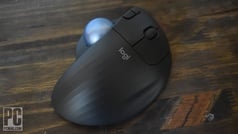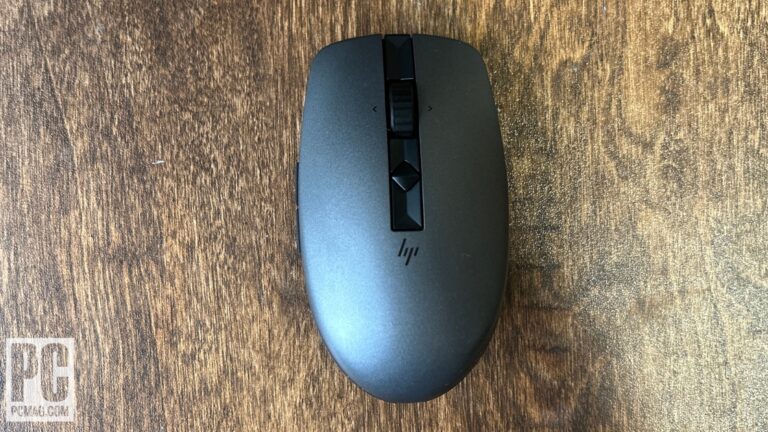
[ad_1]
When designing a basic mouse for the office, most companies try to keep it simple. You get five or six buttons, simple wireless options, and long battery life (powered by a disposable battery). The HP 710 Rechargeable Silent Mouse ($79.99), on the other hand, is a step up from this basic work mouse template. It offers more inputs than you’d expect, a strong rechargeable battery, and a surprisingly comfortable shape despite its pocket-size chassis. It’s also partially made from sustainable materials, making it both an environmentally conscious choice and a full-featured office peripheral.
A Travel Mouse by Any Other Name
Technically, HP didn’t label the HP 710 Rechargeable Silent as a “travel” or “portable” mouse, but it definitely falls into that category. The rounded shape and ribbed, rubberized grips on the sides bear a striking resemblance to Logitech’s MX Anywhere 3, and I imagine that isn’t a coincidence. They aren’t identical, but both mice are positioned as ideal companions for workers who move around, either in different rooms at home or while traveling.
Measuring 1.3 by 4 by 1.8 inches (HWD), the HP 710 is very small and relatively flat. It also weighs just 2.96 ounces, which is light for a mouse designed for anything besides esports gaming. The dimensions translate into a mouse that’s easy to stash in your bag for a business trip or even carry around in your pocket. It also means the mouse probably isn’t large enough to provide support for your entire hand. Even my small-to-average-size palm drags along the desk surface behind the mouse if I don’t choke up on it with my fingertips all the way at the top edge. Despite the small footprint, though, the base of the mouse does have enough of a hump that it will support your hand and keep it in place should you find a natural way to fit the whole thing on top of it. If most mice feel too large for you, the HP 710 is one of the best-shaped small mice I’ve encountered.
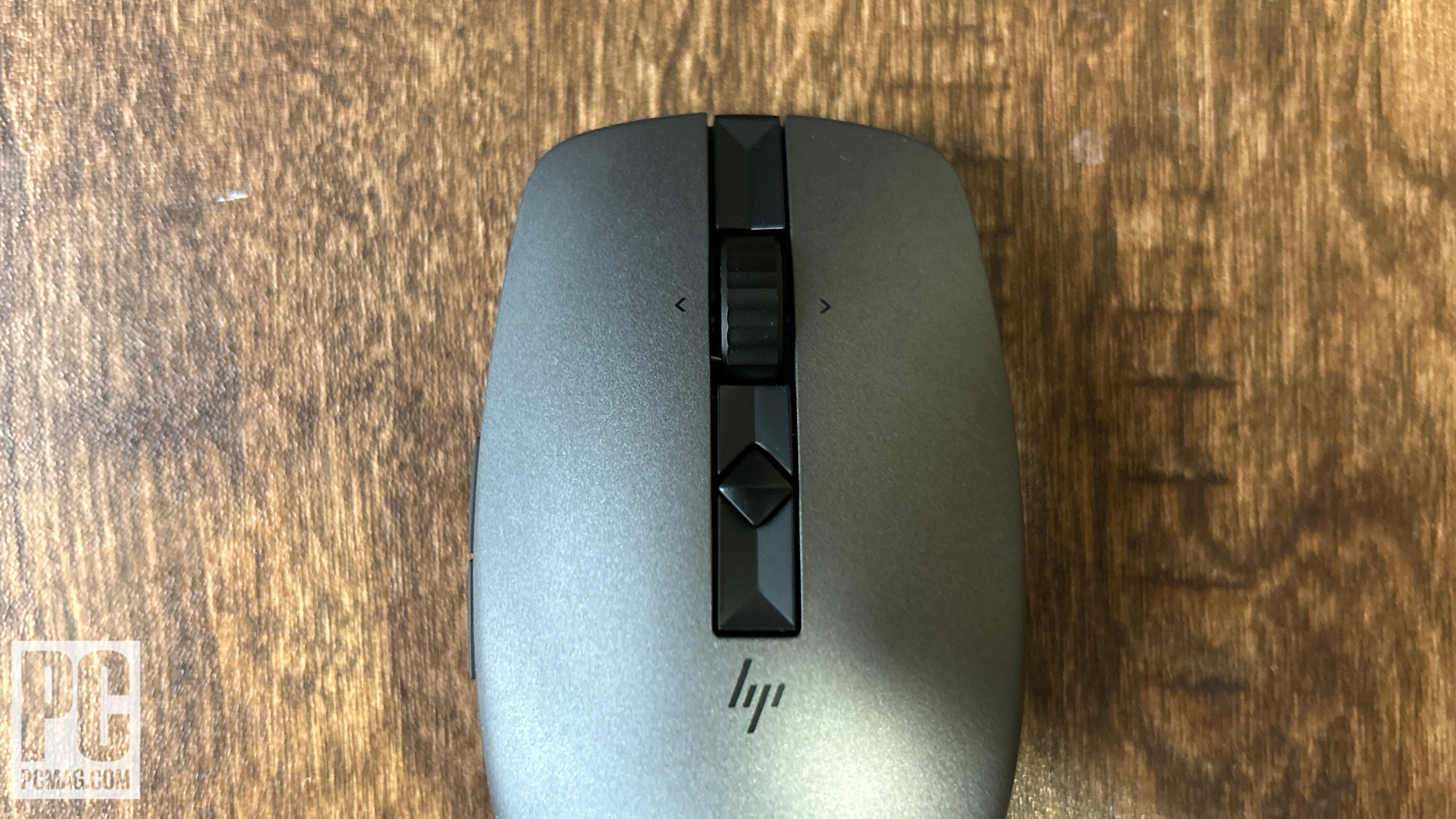
(Credit: Mike Epstein)
The HP 710 steps things up in the input department, too. Depending on how you count, it has anywhere from seven to nine buttons. On top, you have five inputs: two click panels and a clickable scroll wheel that also tilts left and right, adding two extra “buttons.” There’s also a non-input button below the wheel, which toggles tactile and free-wheel scrolling.
Similar Products
Tilting scroll wheels aren’t uncommon: We’ve seen them regularly on luxury gaming mice, but this is the first time I’ve seen it on a sub-$100 office mouse. Whether you use them for lateral (left and right) scrolling or reassign them to other functions, having a pair of extra inputs suddenly gives a lot more room to customize your mouse experience.
On the side, you have the standard back and forward buttons. And last, but not least, the underside features a button for wireless signal selection, which also serves as a pairing button for up to two Bluetooth connections. It’s increasingly the standard for premium office mice, but the HP 710 can connect wirelessly to as many as three devices: one via a 2.4GHz wireless connection using a USB dongle, and two over Bluetooth 5.3. Using the selection button, you can cycle through your connected devices quickly and easily. You’ll find a storage slot for the 2.4GHz dongle underneath the top panel of the mouse, so it’s easy to carry around that bit without losing the extra part.
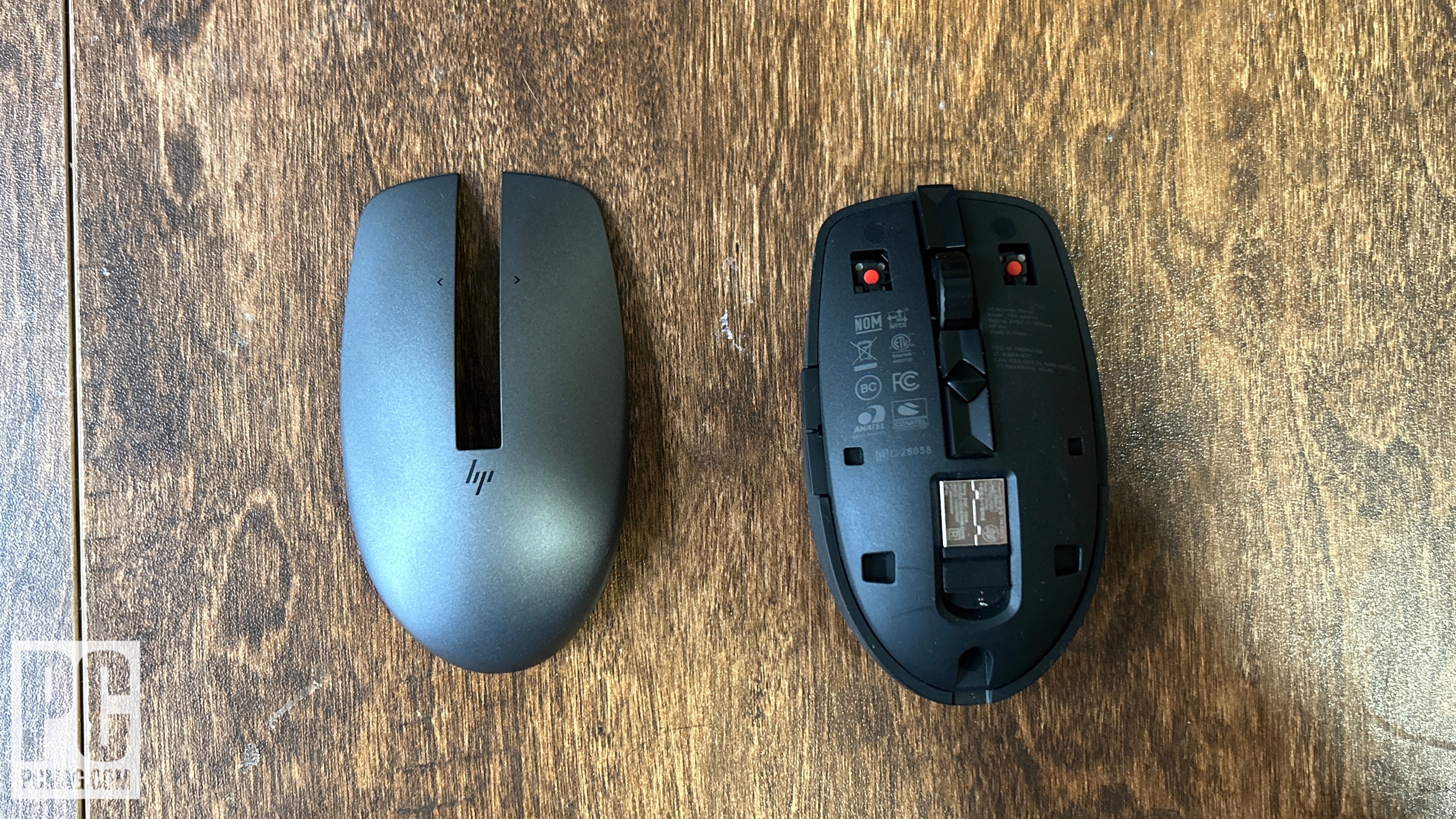
(Credit: Mike Epstein)
As with most office mice, the internal components of the HP 710 aren’t designed to wow, but are more than accurate enough for web browsing, word processing, and other everyday work. The HP sensor, dubbed Track on Glass, can move at up to 3,000 dots per inch (dpi), which is relatively low compared with high-performance mice, but well within the range that most people actually use. More important, as the sensor name implies, it’s designed to work on any surface, including glass, which is a hallmark of premium office mice.
Speaking of name implications, the mouse also features silent switches, minimizing the amount of noise you’ll make in the office. In my case, my mechanical keyboard would drown it out anyway, but some people are very conscious about how much noise they make while they work, hence HP’s decision to put “Silent” in the name.
The HP 710 manages to offer very good battery life—up to an estimated 90 days on a full charge—using a rechargeable battery rather than AA or AAA cells, which is still very common among wireless productivity mice. (In general, I prefer rechargeable batteries, both because you never find yourself with a spare battery and because disposable cells can lead to more e-waste over the lifespan of your mouse.) In testing, the mouse drained about 25% after a few weeks of daily use, which falls in line with HP’s projection.
When you do finally need to charge, there’s a USB-C port on the front of the mouse. Sadly, the port is only used for charging and firmware updates. You can’t plug in the mouse and use it wired while it charges. (To be clear, you can charge it and use it at the same time, but you’ll need to connect the mouse to your device wirelessly, as well as using the cable.)
Mousing at the Edge
The HP 710 Rechargeable Silent Mouse receives software-based customization support through the manufacturer’s peripheral configuration app, HP Accessory Center (HPAC). In the wider scheme of things, HPAC is a simple, basic config app. It allows you to remap six of the seven primary inputs—the left button has to stay assigned to the left click function—and program custom button maps for specific apps. You can also adjust your cursor speed and scroll wheel sensitivity.
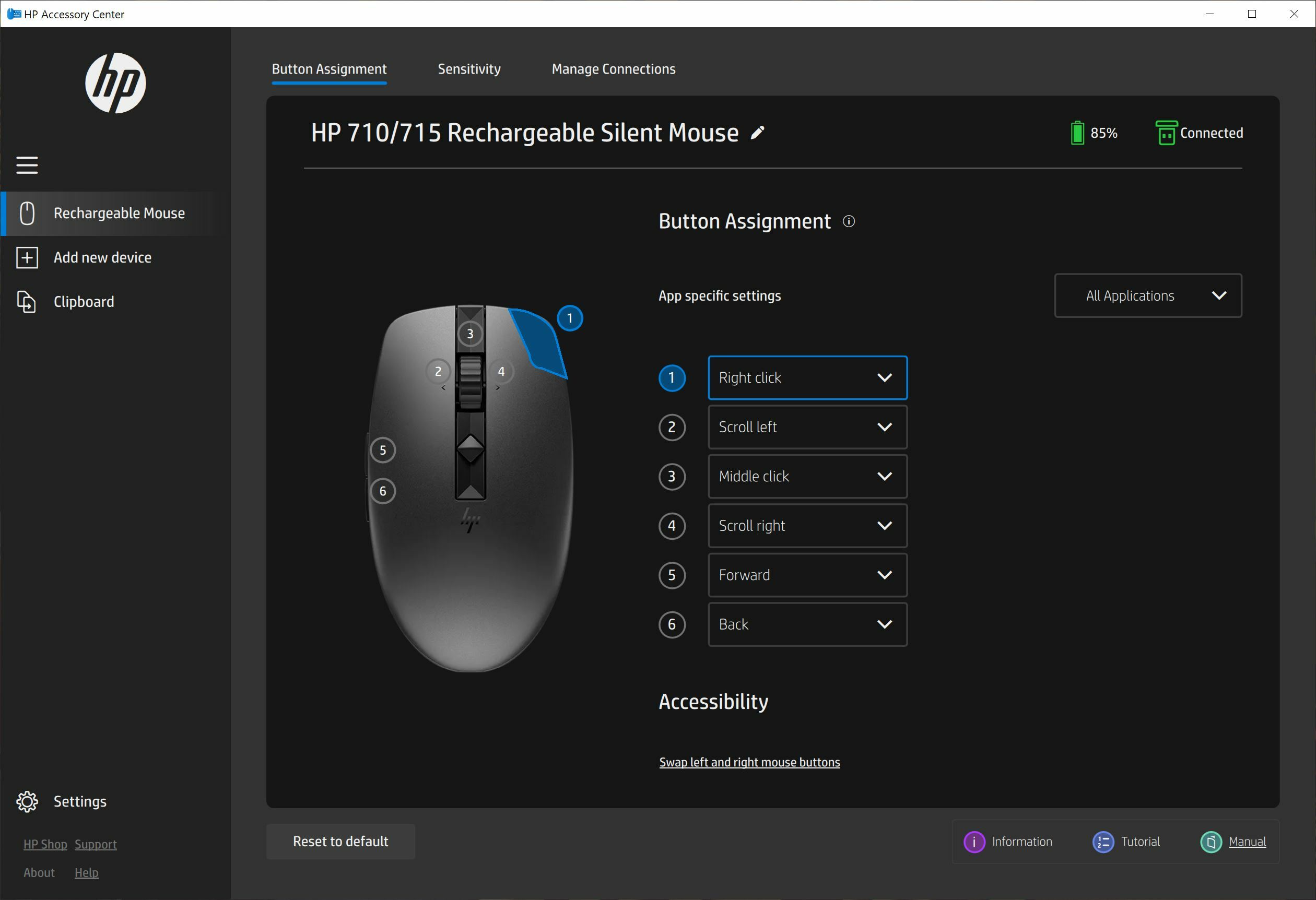
(Credit: HP)
Last, in an interesting little flourish, you can set up to six custom “edge layout” inputs that you trigger by moving your mouse cursor to different points around the edge of your screen. These kinds of inputs are not uncommon—you can set “hot corners” at the system level in macOS, for example—but you rarely see them tied directly to your mouse and its companion software.
HP Accessory Center lacks many of the advanced features found in gaming-mouse config apps, like the ability to create custom macros or create multiple button map profiles, which can be helpful if multiple users share a mouse. Still, I wouldn’t call it a huge loss. Many people prefer not to spend too much time tinkering with their office mice.
Verdict: It’ll Get Stuff Done on the Go
The HP 710 Rechargeable Silent Mouse is a strong choice if you want a portable mouse to carry around on your commute, on business trips, or move around the house. But as with our current go-to travel mouse, the Logitech MX Anywhere 3, the 710 probably isn’t the best choice to use as your primary mouse. Lots of productivity and gaming mice offer more functionality and better ergonomic support, such as the Logitech MX Master 3S and the Razer Basilisk line.
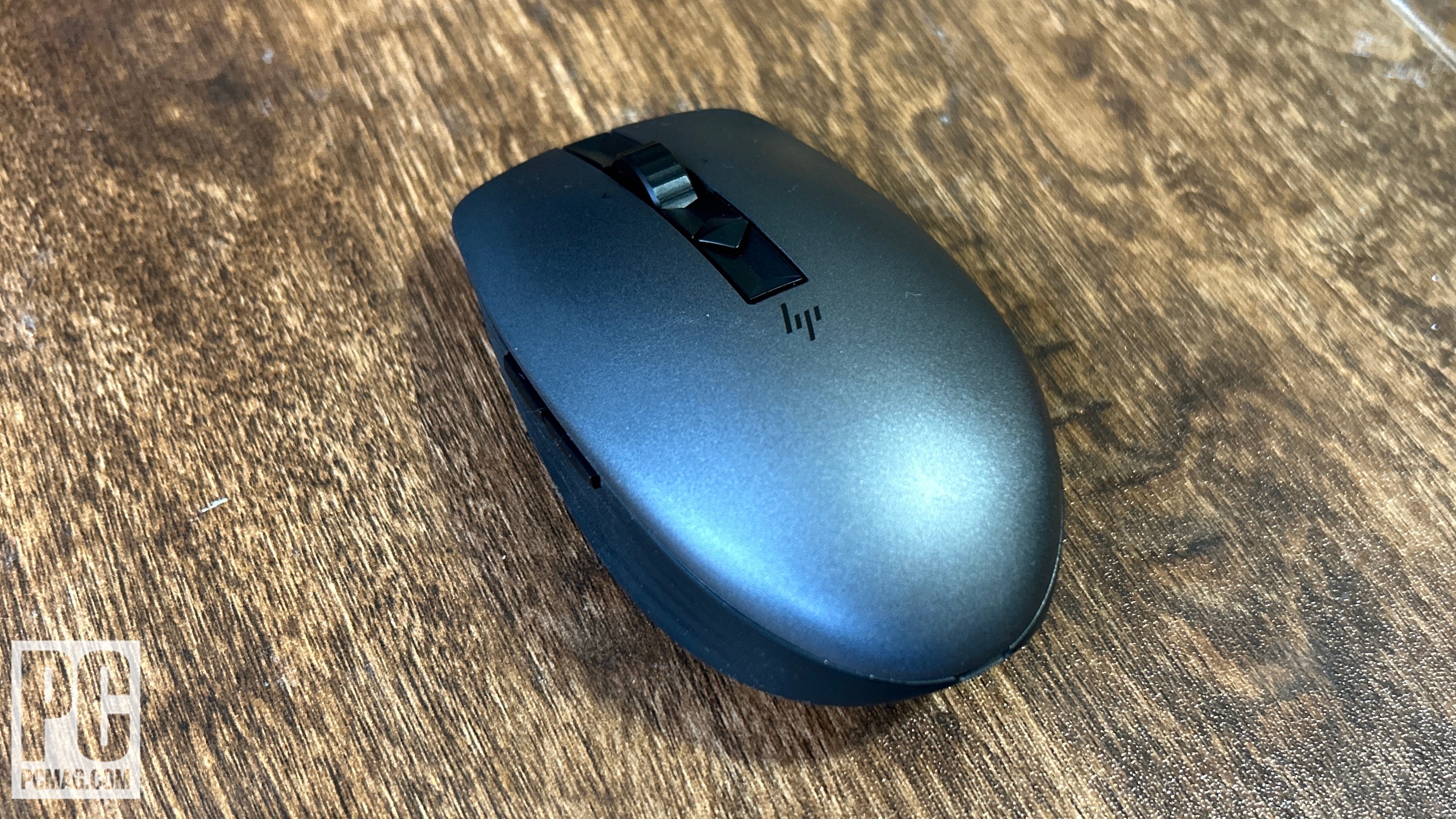
(Credit: Mike Epstein)
That said, if you have small hands, or want a secondary mouse for travel, the HP 710 Rechargeable Silent Mouse should suddenly jump up to the top of your list. At $79.99, it costs the same as the MX Anywhere 3, while offering stronger battery life, more inputs, and a more comfortable shape for small hands.
[ad_2]
Source link : https://www.pcmag.com/reviews/hp-710-rechargeable-silent-mouse




